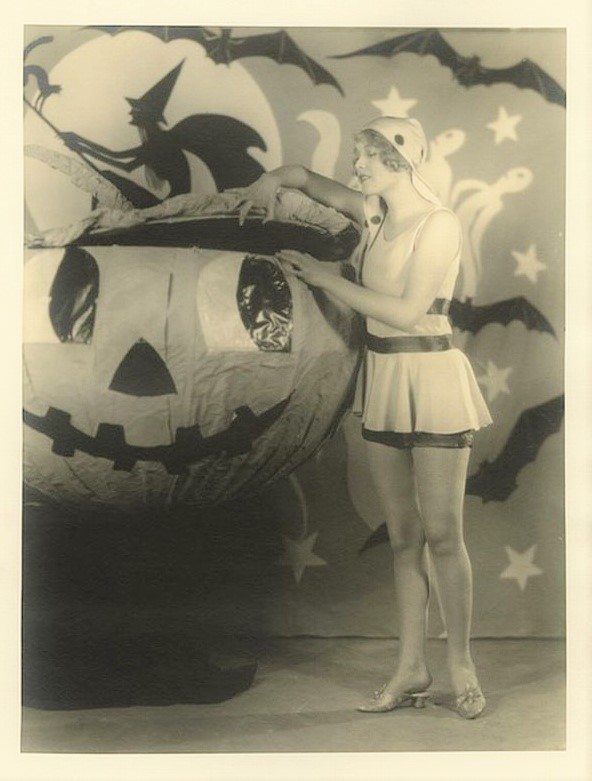Free Shipping on Orders over $49 (Retail Only)
Shop Now
- Address: 144 High Street Harpers Ferry, WV 25425
- Shop: 304.461.4714
- Orders: 304.535.8904


The 20s were a wild time – women got to vote in the first year of the decade and lost their wealth by the last. In-between we saw flappers, prohibition, and American expatriates resettling in Paris where they reported in on everything from the arts to the art of love-making.
As for the Halloweens? Revelers still ate the nuts and fruits dating back to ancient rituals, but the 20’s also introduced riotous new candies, the more orange and black the better.
On the list were molded chocolates, shaped like cats, jack o’ lanterns and other Halloween emblems; jelly beans, plain and jumbo; lollipops; hard candies; truffles and other chocolates in decorated Halloween boxes; chocolate covered nuts, ie Bridge Mix; peppermint patties; chocolate covered cherries; orange and black jelly beans, gum drops, and candy corn; cream witches; cream owls; and orange and black sugar sticks. To name a few.
By the 1930s, parties shared the stage with Trick or Treating. Today, of course, Trick-or-Treat is center on the Halloween stage, with candy a secondary presence often replaced by alcohol. Regardless, the days of elegant Halloween sweets has died off, leaving behind cheap, but still fun, grandchildren.
A Quick Look at the History of 1920s Candy that Are Still with Us Today
- Jelly Beans. Originated around 900 CE as the Turkish Delight. Morphed into the candy covered jelly bean in Boston, mid-1800s
- Bridge Mix. Made for bridge games, all the rage from the 20’s through the 50’s, so players could continue holding cards with one hand and snack on the small pieces of sweets with the other.
- Gum Drops. Supposedly originated around 1801 with a presence on candy lists through the 19th century. One of the Turkish Delight family.
- Candy corn. Originally made in 1898 by the Wunderlee Company of Philadelphia, known as “Chicken Feed.”
Learn more & indulge when you visit our Harpers Ferry location or online store!
Join us for our popular talks & tastings!